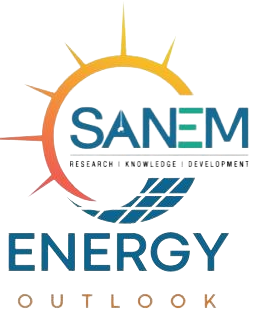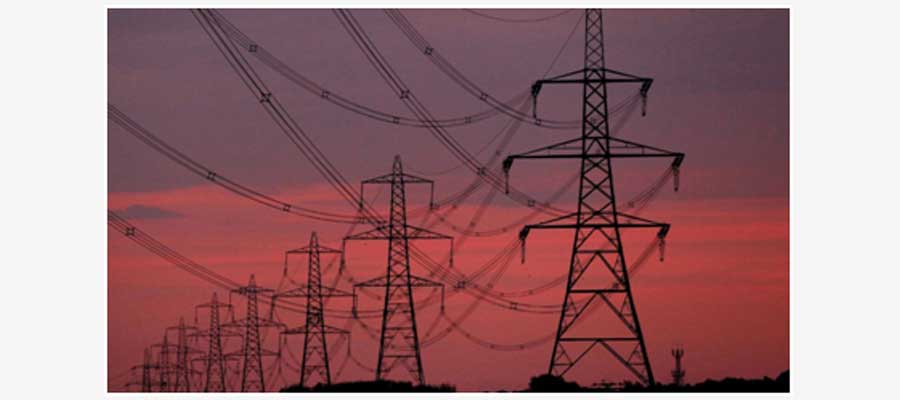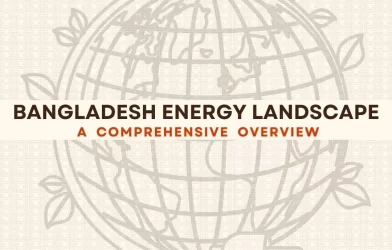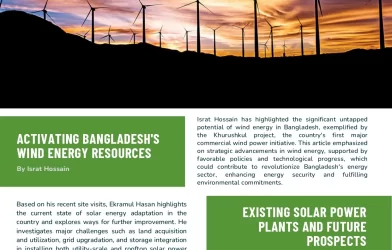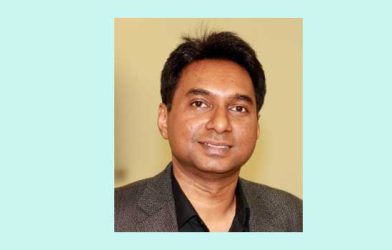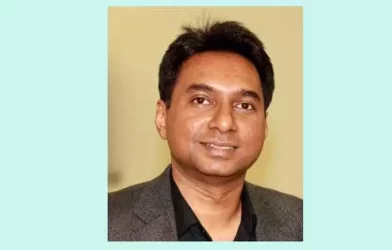An Integrated Power Sector Master Plan has been prepared with the support of the Japan International Cooperation Agency (JICA) for the People’s Republic of Bangladesh as of June 2021. It integrates and revises the previous energy plans such as the Power System Master Plan 2016 (PSMP 2016), the Energy Efficiency and Conservation Master Plan (EECMP2016), and the Gas Sector Master Plan (GSMP 2017), so that the new plan can fit into the current energy trends towards decarbonization.
The third stakeholder meeting for this Plan was held in December 2022, where a draft version of the full plan was presented.
Broadly, the goal of the IEPMP 2023 is to shift to a lower-carbon emission society by 2050, with a stable and affordable supply of energy, to ensure a better standard of living and economic growth.
There are three GDP scenarios: PP2041 is based on the projections of Perspective Plan 2041, IMF Ext Case is according to the IMF World Economic Outlook, and In-between Case is in the middle of these two types of projections.
PP2041 assumes 8.0 percent GDP growth in 2025 and 9.9 percent in 2041, which does not seem to be realistic. So, the maximum electricity demand projection of 97 GW according to PP2041 is way higher than the prospective real situations in the future.
A specific target in the plan is to achieve clean energy up to 40% of total energy. It is different from the formal announcement of the Government of Bangladesh at COP-26 to achieve renewable energy up to 40%.
Currently, the power-generating energy sources are natural gas, coal, power import, renewable energy (solar, water, biomass, hydro, etc.), diesel, and furnace oil.
The clean energy combination proposed in the IEPMP consists of renewable energies (solar, wind, hydro, etc.), nuclear, electricity import(hydro), hydrogen, ammonia, CCS (Carbon Dioxide Capture and Storage) in thermal power plants as prospective means for low carbonisation.
Among these, Hydrogen (H2) and Carbon Capture Strategy (CCS) will be used in gas-firing (gas used as fuel) power plants and Ammonia (NH3) will be used in coal-firing (coal used as fuel) power plants. These three new sources have been proposed as the contributing sources to reduce CO2 emissions and risk-hedging.
According to PP2041 case, H2 co-firing (20 percent) will start from 2035 whereas the in-between case assumes it as 2037. 100 percent H2 firing of the previous gas-firing power plants is expected around 2040. Afterward, Carbon Capture Storage (CCS) technology is assumed to be installed in 2040.
The feasibility study of this power source should have considered the affordability of the country, as it costs much higher (USC 7.8/kWh) than gas-fired plants. Though the CCS is not that costlier (USC 2.2/kWh) the environmental risk of leakage while transporting and storing, and difficult installation requirements, have made it a difficult and uncertain source.
Furthermore, the finances depend on the CO2 storage location, as well as the transportation method, indicating that the cost might be higher than assumed. In case of Ammonia-co-firing power generation, PP2041 assumes 20% NH3 after 2030, while the In-between case has made it after 2035.
Similar to H2 and CCS, NH3 is more expensive than gas-fired plants (USC 10.8/kWh) with safety issues as well for storage and piping facilities. So, the given clean energy combination in the IEPMP needs to be rechecked for its compatibility with a would-be-developing nation like Bangladesh.
The LNG sector is still encouraged to expand. despite the high cost and volatile market. BERC (Bangladesh Energy Regulatory Commission) plays a vital role in regulating LNG import, distribution, and support investment by participants (local and foreign).
Hence BERC restructuring by following the FERC: Federal Energy Regulatory Commission) in the US has been suggested. Even potential collaboration with Japan in buying LNG has also been suggested. It is important to calculate and compare the economic cost of LNG import with other power sources so that the decision to invest more in this sector can be tested.
The global de-carbonisation trend is concentrating on RE usage increasingly. Bangladesh uses solar power mostly among the renewable energy sources, though not all the solar facilities are connected to the system; some of them are used independently. Hence a stable, efficient, and connected network system is necessary to expand.
It has been suggested that the grid connection conditions should be prepared with improved grid reliability by the introduction of RES (Renewable energy source) support policies such as the FIT (Feed-in tariff) system. Also, the plan has mentioned that the wind potential off the coast of Bangladesh in comparison with those of developed countries is limited.
Hence, the wind-based power generation targets seem to be very uncertain and create much confusion about the energy-combination plan. The supply capacity of solar power generation is assumed to be 20% whereas, for wind power, the assumption is also 20 percent.
Having only 4 percent power generation from renewable sources with the largest percentage from solar power and not having any functional wind power generation plant, these projections further signal the over-ambitiousness of targets.
Still, the master plan has suggested some significant and realistic renewable energy-promoting policies such as removing cumbersome, complex, and time-consuming permission and bidding procedures for renewable electricity procurement, transferring bidding authority to SREDA (Sustainable and Renewable Energy Development Authority) from BPDB (Bangladesh Power Development Board), increasing the labour force of SREDA, improving limited financing options in the RE sector, structuring a capacity building program for private financial institutions, etc.
The present context of the power sector of Bangladesh focuses on the low generation cost of power, but things will not be the same in 2041 when the world will have already moved to clean and green energy. Renewable energy will be the most used power source, which is the safest as well.
As it has been always pointed out that RE sources are unpredictable and fluctuating, the IEPMP has mentioned thermal power plants as a way to mitigate power load fluctuation by using them as renewable power plants also.
Another means, named flex-USC technology, has been mentioned to increase renewable energy usage. It is a coal-fired power plant that has been planned to use for renewable energies also. Though this technology will raise the usage of renewable sources, an argument arises about whether it is encouraging to build more coal-firing plants and coal-based power generation.
In case of loss of load expectation (LOLE), which is basically the anticipated number of hours per year a country cannot supply efficiently or meet the demand with its electricity production, the IEPMP assumes 24 hours/year target for all periods (present-2030, the 2040s and the 2050s).
Currently, the LOLE is 132 hours/year. A target to reduce 108 LOLE hours in 10 years looks too ambitious to achieve. Furthermore, the master plan has kept this fixed LOLE 24 hours/year, while expecting lower reserve capacity in the coming future, 22 percent in the 2030s and 11 percent in the 2050s.
This is because an excess reserve capacity rate will create excess pressure on the finance. But lesser reserve capacity generates higher LOLE by definition. Keeping both LOLE and reserve capacity low at the same time will only be possible if the unplanned outage (power cut) and the power demand estimation error can be improved.
But there is no specific discussion in the draft IEPMP showing how the unplanned outage rate and demand estimation error would be attained to gain the reserve capacity rate targets.
Regardless of the over-ambitiousness, the IEPMP is the first ever unified and structured master plan for the power sector of Bangladesh focusing on clean energy. Rigorous analysis has made it a strong document for future forwarding. The plan even includes an environmental assessment SEA (strategic environmental assessment).
Henceforth, reconsidering the ambitious targets and speeding up the implementation procedure could lead the country to have a sustainable power sector.

